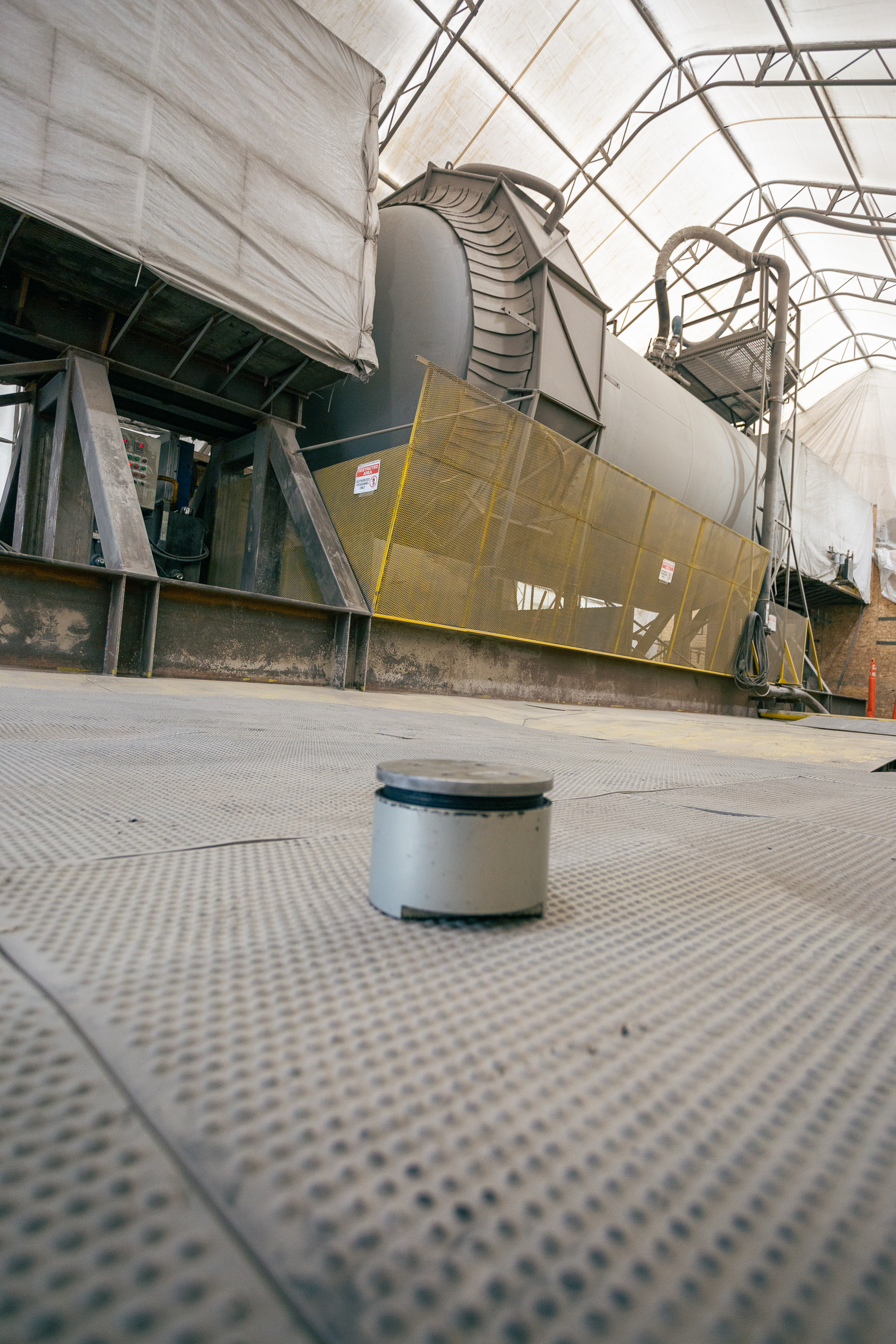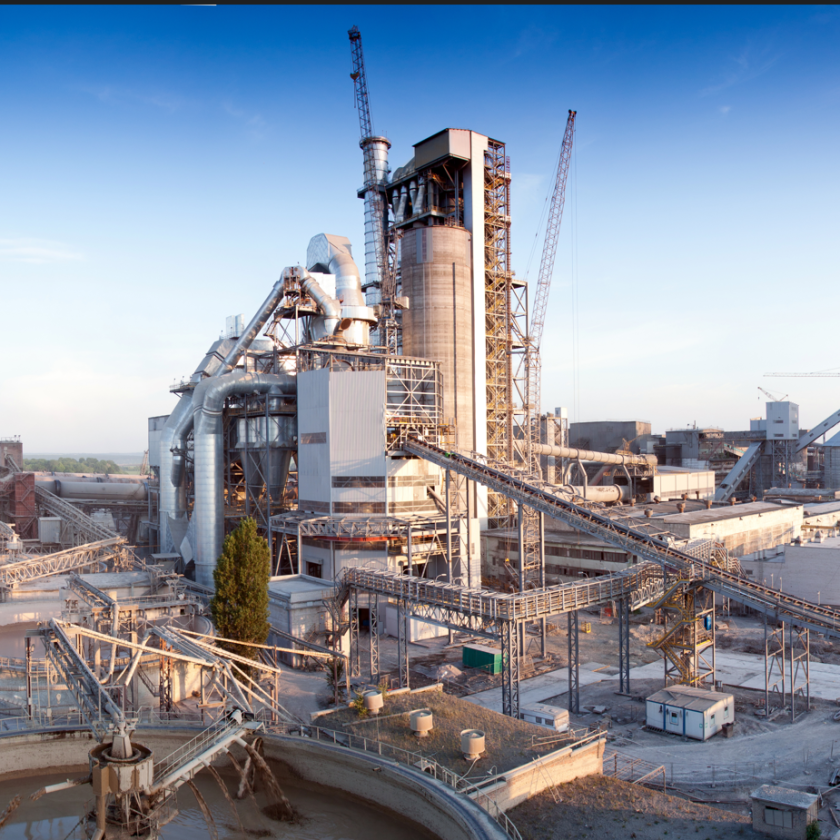A Calgary-Based Company Is Turning CO2 Emissions And Industrial Byproducts Into High-Quality Supplementary Cementitious Materials.
by Jonathan Rowland
Carbon capture is recognized as a key element in most pathways to a decarbonized cement industry. As the Portland Cement Association (PCA) noted in its 2021 Roadmap to Carbon Neutrality, carbon capture, utilization and storage (CCUS) “directly avoids a significant portion of cement manufacturing emissions.” It goes on to call for “accelerated research, funding, and investment in […] CCUS technologies and associated infrastructure.”
Similarly, in its 2022 Roadmap to Net-Zero Carbon Concrete by 2025, the Cement Association of Canada (CAC) anticipates that the scale-up of CCUS will be “vital to the cement and concrete industry reaching net-zero both within Canada and globally […] there is no other technology or process than can eliminate process emissions.” The CAC also expects Canada to host North America’s first commercial deployment of a full-scale capture and storage project at a cement plant.
Both the PCA and CAC follow the International Energy Agency’s foundational Technology Roadmap: Low-Carbon Transition in the Cement Industry. This identifies carbon capture as one of two levers able to provide the largest cumulative carbon emission reduction potential, the other being a reduction in clinker content in cement. These two levers are often considered separately. But one Calgary, Canada-based company has now commercialized technology that integrates the two.
Carbon Upcycling was founded in 2014 to explore various carbon utilization applications. However, since 2019, it has focused on implementing its patented technology to support cement industry decarbonization. Tiffany Duffy, the company’s director of business development and partnerships, sat down with Cement Products to explain the process and its potential.
“Cement has been a building block of mankind for longer than we can really put a number on,” Duffy began. “It’s still quite a traditional industry in many ways; however, we are now seeing a general consensus on the need to decarbonize – although how we get there is still the cause of some of the largest discussions in the industry.”
One of the major challenges is that full-scale carbon capture has not yet been achieved in the cement industry (although Heidelberg Materials’ Brevik cement plant in Norway is well on the way to doing so). It’s expensive and it requires significant adaptation of the existing cement plant and process, as well as infrastructure to transport and store the captured CO2. In short: it’s not readily available or affordable today and probably won’t be for some time.

An Alternative Approach: Carbon-Enhanced SCMs
The good news is that full-scale capture is not the only way forward. “Carbon capture is not a one-size-fits-all approach,” Duffy explained. “In contrast to full-scale capture approaches, our technology is smaller scale, and focuses on utilizing CO2 from cement plant flue gases, alongside waste streams from other industries, to produce a material that can be substituted for clinker in cement.”
That technology is known as MACE (mechanically assisted chemical exfoliation). It works by taking industrial byproducts and combining them with captured CO2 in a patented reactor. This patented reactor first exfoliates the surface of each feedstock particle to increase reactivity. CO2 is then introduced and a chemical reaction take places, called carbon mineralization. The end product permanently stores the carbon and can be used as a high-quality supplementary cementitious material (SCM) in cement production.
According to Duffy, this approach offers a range of benefits to the cement industry. Firstly, CO2 can be captured at very low concentrations. “We can pull CO2 straight from the flue stack without the need for condensation or purification. As an example, we’ve had a site in operation in Calgary, Canada, since 2021 at a natural gas facility that is capturing CO2 from a flue gas stream at about 4% CO2 concentration. Once we have used the CO2, we simply return the remaining gases to the flue gas stream. This makes it a more cost-effective approach to carbon capture than systems that require gas conditioning.”
It also supports the development of low-carbon blended cements. These have “traditionally relied on SCMs such as fly ash and ground granulated blast furnace slag (GGBFS) – supplies of which are becoming increasingly constrained – or materials that require emissions-intensive enhancement such as calcined clay,” continued Duffy. “What we’re able to do is produce a very reactive SCM that sequesters and abates CO2 emissions.”
Supporting SCM Growth With Performance-Based Standards
The company has now tested and enhanced well over 40 different feedstocks; however, it is currently focusing on materials that are already familiar to the cement industry and that fit within or are close to existing standards, such as fly and bottom ashes, alternative steel slags, and clays.
Beyond these, there is also positive research and development being done on mine tailings, among other industrial byproducts, that could open new streams of SCMs. These developments are supported by a move away from prescriptive standards toward a performance-based approach. It’s a development that represents a “huge opportunity” for Carbon Upcycling, said Duffy. “We have a robust R&D group that continues to test and validate materials, focusing on those that we believe will be easy to integrate into cement production, with the mindset that standards are changing and opening up to greater use of SCMs.”
In North America, ASTM’s concrete and concrete aggregates committee is developing a performance-based standard specification for a broad range of SCMs, which aims to ease the adoption of new materials. There is a “level of confidence” that this standard will pass before the second half of 2024, noted Duffy. “But getting new standards through is only part of the battle. We also need to work with those specifying and designing products to get these new SCMs accepted.”
This process is helped by the fact that the industry wants these efforts to succeed. “The industry – from owners, developers, and architects to contractors and, of course, the building material suppliers – is looking for ways to, firstly, reduce its carbon footprint and provide a greener material; and secondly to secure supplies of materials. Against this backdrop, the industry is proving receptive to what we can offer. For our part, we have to make sure we have the data to prove our materials work the way we say they work, and that they do not come with a significant green premium.”
On this final point, Duffy stressed the ease and low-cost with which the Carbon Upcycling process can be incorporated into existing cement plants. Small-scale units (15,000 to 20,000 tpy of product) are roughly the size of a shipping container and can be stacked to increase capacity within the same footprint. The fully electric system is also low energy.
The Need for More SCMs
The Carbon Upcycling process also has the potential to increase local supplies of SCMs, just as demand for SCMs is rising and traditional sources are becoming more constrained. “Historically, there has always been demand for SCMs as a method of decreasing the cost of cement production with lower-cost cementitious materials, such as fly ash and GGBFS,” explained Duffy.
“However, the industries that produce these SCMs are either in decline – as is the case with coal-fired power – or switching to alternative production methods, as is the case in the steel industry, where decarbonization efforts mean we now have large streams of EAF and BOF slags. These work as aggregates but, until now, have not been appropriate for use as SCMs. Our process can now take these slags and enhance them to create a new source of high-quality SCMs; we can also upgrade old fly ashes and slags that have been landfilled and lost reactivity.”
Ultimately, it’s about assessing what materials are currently underutilized or untapped within an area, focusing on low-value materials, and targeting those as feedstocks for the Carbon Upcycling process. This helps create local and more secure supplies of SCMs, reducing the risks, costs, and emissions associated with long distance transportation.
Already in Commercial Operation
Carbon Upcycling has a number of commercial-scale deployments at small scale, including the one in Calgary that has been supplying the local ready-mix concrete market since 2021. The company also has two larger-scale projects upcoming at cement production facilities, with more to be announced, including first deployments in the U.S.
The first of these projects will be at the CEMEX Rugby cement plant in the UK. CEMEX was an early supporter of and investor in Carbon Upcycling. The Rugby project is a “really interesting one,” according to Duffy. “We originally started looking at using waste glass as a feedstock, but through the design process, we were able to build in some flexibility so that multiple feedstocks could be used, including reclaimed fly ashes and alternative slags. It also has a very small footprint for the scale of installation.”
The Rugby installation will have annual capacity of 40,000 t, upcycling an expected 14,000 t of material, and reducing CO2 emissions by 12,000 tCO2 per year through abatement and sequestration.
The second project is taking place at the Ash Grove (a CRH company) cement plant in Mississauga, Ontario, where “we are again evaluating multiple feedstocks, including clays and alternative slags,” noted Duffy. This 34,000-tpy capacity facility is expected to upcycle 30,600 t of material and reduce carbon emissions by 27,200 tCO2 per year through abatement and sequestration.
“We are here, ready, at commercial scale,” concluded Duffy. “We can have an impact now, starting with more traditional and familiar materials, but then expanding what the SCM market looks like by using materials that might previously not have been considered a potential SCM. In doing so, we can address not just cement’s decarbonization challenge but turn what are currently industrial waste streams into valuable resources. This sort of industrial symbiosis will lie at the heart of sustainable, decarbonized industries going forward.”

Tiffany Duffy is a civil engineer with more than 15 years’ experience in the building materials industry. As the director of business development at Carbon Upcycling, Tiffany oversees commercialization and development of the company in North America.



